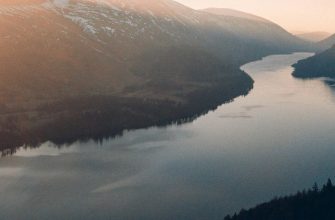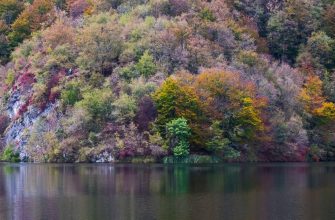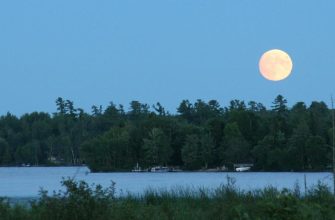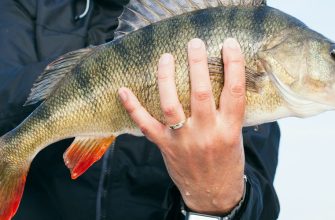- Where Can I Find the Best Fishing Lake in Texas?
- The Variety of Fish Species
- Bass Fishing
- Crappie Fishing
- Catfish Fishing
- The Best Locations for Fishing in Texas Lakes
- Central Texas Lakes
- East Texas Lakes
- Lake Conroe
- Overview of Lake Conroe
- Location
- Key Fish Species
- Largemouth Bass
- Crappie
- Catfish
- White Bass
- Best Fishing Spots
- Scott’s Ridge
- Stubblefield Lake
- Palms Marina
- McWilliams Lake
- Best Times to Fish
- Spring
- Fall
- Early Morning and Late Evening
- Overcast Days
- Lake Fork
- Overview of Lake Fork
- Location
- Key Fish Species
- Largemouth Bass
- Crappie
- White Bass
- Channel Catfish
- Best Fishing Spots
- 1. Three Forks
- 2. Little Caney Creek
- 3. Birch Creek
- 4. Wolf Creek
- Best Times to Fish
- Largemouth Bass
- Crappie
- White Bass
- Channel Catfish
- Lake Buchanan
- Overview of Lake Buchanan
- The Largest Lake in Texas Hill Country
- A Serene Fishing Paradise
- Location of Lake Buchanan
- In the Heart of Texas Hill Country
- Gateway to Adventure
- Key Fish Species in Lake Buchanan
- Striped Bass
- Largemouth Bass
- Catfish
- Best Fishing Spots in Lake Buchanan
- Shaw Island
- Llano River Mouth
- Granite Shoals
- Best Times to Fish at Lake Buchanan
- Spring
- Fall
- Winter
- O.H. Ivie Lake
- Location
- Key Fish Species
- 1. Largemouth Bass
- 2. White Bass
- 3. Crappie
- 4. Catfish
- Best Fishing Spots
- 1. Elm Creek
- 2. Deep Creek
- 3. Rocky Point
- 4. Sandy Beach
- Best Times to Fish at O.H. Ivie Lake
- 1. Spring
- 2. Fall
- 3. Early Morning and Late Evening
- 4. Cloudy or Overcast Days
- 5. Winter
- Lake Palestine
- Overview of Lake Palestine
- Location
- Key Fish Species
- Best Fishing Spots at Lake Palestine
- 1. Flat Creek
- 2. Kickapoo Creek
- 3. Neches River Channel
- 4. Saline Bay
- Best Times to Fish at Lake Palestine
- 1. Spring
- 2. Early Morning and Late Evening
- 3. Overcast Days
- Falcon International Reservoir
- Location
- Key Fish Species
- 1. Largemouth Bass
- 2. White Bass
- 3. Catfish
- Best Fishing Spots in Falcon International Reservoir
- 1. Tiger Island
- 2. Salado Creek
- 3. Falcon State Park
- Best Times to Fish in Falcon International Reservoir
- 1. Spring
- 2. Fall
- 3. Early Morning and Late Evening
- Lake Texoma
- Location
- Key Fish Species
- Best Fishing Spots at Lake Texoma
- North Island
- Washita Flats
- Buncombe Creek
- Rock Creek
- Best Times to Fish at Lake Texoma
- Striped Bass
- Largemouth Bass
- Smallmouth Bass
- Catfish
- Crappie
- Alan Henry Reservoir
- Location
- Key Fish Species
- Best Fishing Spots at Alan Henry Reservoir
- North Shore
- South Shore
- Double Mountain Fork
- Best Times to Fish at Alan Henry Reservoir
- Spring
- Summer
- Fall
- Winter
- Granger Lake
- Overview of Granger Lake
- What is Granger Lake?
- Why is Granger Lake Popular among Anglers?
- Location of Granger Lake
- Where is Granger Lake Located?
- How to Get to Granger Lake?
- Key Fish Species at Granger Lake
- What Fish Species Can You Find at Granger Lake?
- Best Fishing Spots at Granger Lake
- Where are the Best Fishing Spots at Granger Lake?
- What Techniques Work Best at Granger Lake?
- Best Times to Fish at Granger Lake
- When is the Best Time to Fish at Granger Lake?
- Meredith Reservoir
- Location
- Key Fish Species
- Best Fishing Spots at Meredith Reservoir
- 1. The Dam Area
- 2. Brushy Cove
- 3. Buried Tree Area
- Best Times to Fish at Meredith Reservoir
- 1. Early Morning
- 2. Late Evening
- 3. Spring and Fall
- Choke Canyon Reservoir
- Overview of Choke Canyon Reservoir
- Location
- Key Fish Species
- Best Fishing Spots
- Best Times to Fish
- Sam Rayburn Reservoir
- Overview of Sam Rayburn Reservoir
- The Size and Beauty of Sam Rayburn Reservoir
- Creation and Purpose of Sam Rayburn Reservoir
- Location of Sam Rayburn Reservoir
- Key Fish Species in Sam Rayburn Reservoir
- Bass Fishing Haven
- Other Prominent Fish Species
- Best Fishing Spots in Sam Rayburn Reservoir
- Five Finger Area
- Veach Basin
- Black Forest
- Best Times to Fish in Sam Rayburn Reservoir
- Spring
- Fall
- Early Morning and Late Evening
- Caddo Lake
- Location
- Key Fish Species
- 1. Largemouth Bass
- 2. Crappie
- 3. Catfish
- Best Fishing Spots in Caddo Lake
- 1. Big Cypress Bayou
- 2. Goose Prairie
- 3. Potters Point
- Best Times to Fish in Caddo Lake
- 1. Spring
- 2. Fall
- 3. Early Morning and Late Evening
- Lake Amistad
- Overview
- Location
- Key Fish Species
- Best Fishing Spots
- Best Times to Fish
- Toledo Bend Reservoir
- Overview of Toledo Bend Reservoir
- Location
- Key Fish Species
- Best Fishing Spots
- 1. Huxley Bay
- 2. Patroon Creek
- 3. Indian Mounds Recreation Area
- 4. Chicken Coop
- Best Times to Fish
- 1. Spring
- 2. Fall
- 3. Early Morning and Late Evening
- How to Choose the Best Lake for Texas Fishing
- Factors to Consider when Choosing a Fishing Lake in Texas
- 1. Location
- 2. Fish Species
- 3. Lake Size and Depth
- 4. Lake Conditions
- 5. Fishing Regulations
- FAQs
- Q: What are some of the best fishing lakes in Texas?
- Q: Where can I find good bass fishing lakes in Texas?
- Q: What are the top lakes in Texas for bass fishing?
- Q: What species of bass can I catch in Texas lakes?
- Q: Where are the best fishing spots in Texas?
- Q: Are there any trophy bass lakes in Texas?
- Q: Do I need a fishing license to fish in Texas?
- Q: Can I catch striped bass and white bass in Texas lakes?
- Q: Where are the best freshwater fishing lakes in Texas?
- Q: Which lake is considered one of the top lakes for fishing in Texas?
Texas is renowned for its vast and diverse fishing opportunities. With numerous lakes and reservoirs scattered across the state, anglers from all around flock to Texas to experience the thrilling sport of bass fishing. Known for being home to some of the best lakes to fish in the country, Texas offers a multitude of options for those eager to cast their lines and reel in some trophy-worthy catches.
Situated in the heart of East Texas, this region is widely recognized as one of the best fishing destinations in the state. Its remote and serene landscapes create the perfect backdrop for an unforgettable fishing experience. Here, anglers can pursue various species of black bass, with particular emphasis on the elusive largemouth bass. These fish are known for their size and strength, making them a prized catch among professional and recreational fishermen alike.
Texas, in collaboration with Texas Parks and Wildlife, has established itself as a prominent destination for bass fishing enthusiasts. Some of the best lakes and ponds for bass fishing can be found within the state. These top bass reservoirs, such as Lake O’ the Pines, offer expansive stretches of water teeming with some of the largest bass in the country. For avid anglers, these lakes are like a dream come true, providing ample opportunities to hook onto a real trophy.

Bass fishing in Texas is not solely limited to the eastern region of the state. In fact, West Texas boasts its fair share of fishing hotspots, attracting anglers from far and wide. The Big Cypress Bayou in Texas on the Big Cypress and hybrid striped bass fishing in West Texas are just a few examples of the diverse fishing options available throughout the state.
To take advantage of the outstanding fishing opportunities in Texas, anglers are required to obtain a Texas fishing license. This license ensures that the fishery resources are managed and protected for future generations to enjoy. Additionally, regulations are put in place to promote responsible fishing practices and maintain the overall health of the fish populations.
Whether you’re a seasoned angler or a beginner looking to try your hand at bass fishing, Texas is the ultimate destination. With its abundance of lakes, reservoirs, and rivers, the state offers some of the best bass fishing in the country. So pack your fishing gear, grab your Texas fishing license, and get ready to embark on an unforgettable fishing adventure in the Lone Star State.
Where Can I Find the Best Fishing Lake in Texas?

Texas is known for its vast and diverse natural landscapes, and its lakes are no exception. With over 150 major lakes spread across the state, Texas offers an abundance of fishing opportunities for both locals and visitors. From the bustling cities to the peaceful countryside, Texas lakes provide a diverse range of fish species to target. Whether you’re a seasoned angler or a novice looking to cast a line, the fishing opportunities in Texas lakes are sure to excite and challenge you.
The Variety of Fish Species
Bass Fishing
Texas lakes are renowned for their excellent bass fishing opportunities. The state is home to several species of bass, including largemouth, smallmouth, and Guadalupe bass. Some of the best bass fishing lakes in Texas include:
- Lake Fork: Known for its trophy-sized largemouth bass, Lake Fork is a favorite destination for anglers seeking a challenge.
- Lake Amistad: Located on the Texas-Mexico border, Lake Amistad is famous for its clear waters and abundance of largemouth and smallmouth bass.
- Sam Rayburn Reservoir: With its vast size and diverse habitat, Sam Rayburn Reservoir offers exceptional bass fishing throughout the year.
Crappie Fishing
Crappie fishing is another popular pursuit in Texas lakes. These tasty panfish can be found in abundance in various lakes, especially during the spring spawning season. Some top crappie fishing spots in Texas include:
- Lake Palestine: Known for its consistent crappie population, Lake Palestine offers anglers the opportunity to catch both white and black crappie.
- Lake Conroe: Located near Houston, Lake Conroe is a prime crappie fishing destination, with its numerous submerged brush piles attracting these fish.
- Cedar Creek Reservoir: This East Texas lake is known for its large crappie population, making it a favorite spot for anglers targeting these fish.
Catfish Fishing
Texas lakes are abundant with catfish, providing anglers with thrilling fishing experiences. Whether you prefer the tasty channel catfish or the hard-fighting blue catfish, you’ll find them in Texas. Some notable catfish fishing lakes include:
- Lake Tawakoni: Known for its trophy-sized blue catfish, Lake Tawakoni is a popular destination for catfish anglers.
- Lake Texoma: Straddling the Texas-Oklahoma border, Lake Texoma is famous for its excellent catfish population, including both channel and blue catfish.
- Lake Livingston: With its diverse habitats and ample food sources, Lake Livingston offers great opportunities for catfish anglers.
The Best Locations for Fishing in Texas Lakes
Central Texas Lakes
- Lake Travis: Located near Austin, Lake Travis is a popular fishing destination, known for its largemouth bass, white bass, and catfish.
- Lake Buchanan: This scenic lake in the Hill Country offers excellent fishing opportunities for striped bass, white bass, and catfish.
- Inks Lake: Situated in the Highland Lakes chain, Inks Lake is a favorite spot for anglers targeting largemouth bass, catfish, and sunfish.
East Texas Lakes
- Toledo Bend Reservoir: Straddling the Texas-Louisiana border, Toledo Bend Reservoir is one of the top bass fishing lakes in the country.
- Lake Sam Rayburn: With its vast size and diverse habitats, Lake Sam Rayburn offers exceptional fishing opportunities for bass, crappie, and catfish.
- Lake Fork: Known for its trophy-sized largemouth bass, Lake Fork is a must-visit destination for anglers seeking a challenge.
Lake Conroe

Overview of Lake Conroe
Lake Conroe is a 21,000-acre reservoir located in Montgomery County, Texas. It was created in 1973 as a water supply for the city of Houston and quickly became a recreational hotspot due to its natural beauty and excellent fishing opportunities. The lake is surrounded by dense forests and offers stunning views of the nearby Sam Houston National Forest. With its clear waters and diverse aquatic ecosystem, Lake Conroe has gained a reputation as one of the top fishing destinations in Texas.
Location
Lake Conroe is conveniently located just 40 miles north of downtown Houston, making it easily accessible for both local and out-of-town anglers. The lake is situated on the west fork of the San Jacinto River and is well-connected to major highways, including Interstate 45. Its proximity to Houston makes it a popular weekend getaway for city dwellers looking to escape the hustle and bustle of urban life and immerse themselves in nature.
Key Fish Species
Lake Conroe is teeming with a variety of fish species, providing anglers with plenty of opportunities to reel in their prized catch. Some of the key fish species found in Lake Conroe include:
Largemouth Bass
Known for their aggressive nature, largemouth bass are highly sought after by anglers. Lake Conroe is home to a healthy population of bass, with many reaching impressive sizes. The optimal time to target bass is during the spring and fall when they are most active.
Crappie
Crappie are abundant in Lake Conroe and provide anglers with great sport and delicious table fare. They can be found near submerged structures such as brush piles and boat docks. Spring and early summer are the best times to target crappie, as they move to shallower waters to spawn.
Catfish
Lake Conroe offers excellent opportunities for catfish anglers. Channel catfish, blue catfish, and flathead catfish can all be found in the lake. Catfish are often caught using a variety of baits, including stinkbaits, chicken liver, and cut bait.
White Bass
White bass, also known as sand bass, are known for their fierce fighting ability. They can be found in schools and are most active during the spring when they migrate to the shallows to spawn. Anglers can target white bass using a variety of lures and baits.
Best Fishing Spots
Lake Conroe offers numerous fishing spots that cater to different angling preferences. Here are some of the best fishing spots on the lake:
Scott’s Ridge
Located on the north end of the lake, Scott’s Ridge is a popular spot for bass fishing. The submerged trees and brush provide ample cover for bass, making it an ideal location to target these elusive fish.
Stubblefield Lake
Stubblefield Lake, located on the west side of Lake Conroe, is known for its excellent crappie fishing. Anglers can find crappie near submerged timber and brush piles. This spot is especially productive during the spring spawning season.
Palms Marina
Palms Marina is a favorite spot among catfish enthusiasts. The marina’s proximity to deeper waters makes it an ideal location to catch catfish. Anglers can also find a variety of other fish species in this area.
McWilliams Lake
McWilliams Lake, situated on the eastern side of Lake Conroe, is a prime spot for white bass fishing. These fast and aggressive fish can be found near the inlet of the lake and are easily targeted using jigs, spinners, and crankbaits.
Best Times to Fish
To optimize your chances of a successful fishing trip to Lake Conroe, it’s essential to consider the best times to fish. Factors such as weather conditions, water temperature, and fish behavior play a crucial role in determining the ideal time to cast your line. Here are some tips to help you plan your fishing expedition:
Spring
Spring is an excellent time to fish Lake Conroe, as many fish species become more active during this season. Largemouth bass and crappie are particularly active during their spawning periods, making them easier to target.
Fall
Fall is another prime fishing season on Lake Conroe. As the water temperatures cool down, largemouth bass become more active and feed voraciously in preparation for the winter. Crappie fishing also picks up in the fall as they move closer to shore.
Early Morning and Late Evening
During the summer months, when the temperatures can be scorching, fishing during the early morning and late evening can be more productive. The cooler temperatures during these times of the day can entice fish to feed actively.
Overcast Days
Overcast days can provide excellent fishing opportunities on Lake Conroe. The reduced sunlight can make fish more comfortable and increase their feeding activity. Take advantage of these days to target your favorite fish species.
Lake Fork

Overview of Lake Fork
Lake Fork is a reservoir located in Wood, Rains, and Hopkins counties in northeastern Texas. Created in 1980, this man-made lake covers approximately 27,690 acres and boasts a shoreline that stretches for over 315 miles. The lake was primarily constructed for water supply and flood control purposes, but it has since gained fame for its exceptional fishing opportunities.
Location
Situated just 70 miles east of Dallas, Lake Fork is easily accessible from major cities in Texas. Its proximity to urban areas makes it a popular destination for both local and out-of-state anglers. The lake is located near the town of Quitman, Texas, providing visitors with convenient access to amenities such as accommodations, restaurants, and tackle shops.
Key Fish Species
Lake Fork is renowned for its trophy-sized largemouth bass, making it a dream destination for bass fishing enthusiasts. However, the lake is also home to a variety of other fish species, including:
Largemouth Bass
Lake Fork is famous for its trophy-sized largemouth bass, with many anglers catching specimens weighing over 10 pounds.
The lake’s fertile waters provide an ideal habitat for these bass, resulting in their impressive growth rates.
The bass population is carefully managed to ensure sustainable fishing opportunities for future generations.
Crappie
Crappie fishing is popular year-round at Lake Fork, with anglers reeling in impressive catches.
Spring and fall are particularly fruitful seasons for crappie fishing, as they spawn in shallow waters during these times.
White Bass
Known for their fighting spirit, white bass are abundant in Lake Fork.
These fish can be found in schools, making for exciting and action-packed fishing experiences.
Channel Catfish
Lake Fork offers excellent opportunities for catfishing, with channel catfish being the primary species targeted by anglers.
These fish can be caught year-round, but the summer months are especially productive.
Best Fishing Spots
1. Three Forks
Located on the western side of the lake, Three Forks is a popular fishing spot for largemouth bass.
The area features submerged vegetation and structure, providing an ideal habitat for bass.
2. Little Caney Creek
Little Caney Creek is a hotspot for crappie fishing, particularly during the spring spawn.
Anglers can find crappie hiding around submerged brush piles and fallen trees.
3. Birch Creek
Birch Creek is known for its abundance of white bass, especially during their annual spring run.
Anglers can target these fish by casting near areas with swift currents and rocky structures.
4. Wolf Creek
Wolf Creek is a favored location for catfishing, with anglers having success using various baits and techniques.
Look for deeper holes, submerged trees, and rocky areas where catfish tend to congregate.
Best Times to Fish
The optimal times to fish at Lake Fork vary depending on the target species. However, here are some general guidelines:
Largemouth Bass
Early morning and late afternoon are prime times for bass fishing, as the fish are more active during these cooler periods.
Spring and fall are the best seasons for catching trophy-sized bass, as they are in their pre-spawn and post-spawn feeding patterns.
Crappie
Spring and fall are the most productive seasons for crappie fishing, as they move into shallow waters to spawn.
Dawn and dusk are particularly fruitful times to catch crappie.
White Bass
The spring run is the most opportune time to target white bass, as they migrate upstream to spawn.
Early morning and late afternoon are the optimal times for white bass fishing.
Channel Catfish
Channel catfish can be caught year-round at Lake Fork, but the summer months tend to be the most productive.
Night fishing can be highly rewarding for catfish, as they are more active in low-light conditions.
Lake Buchanan
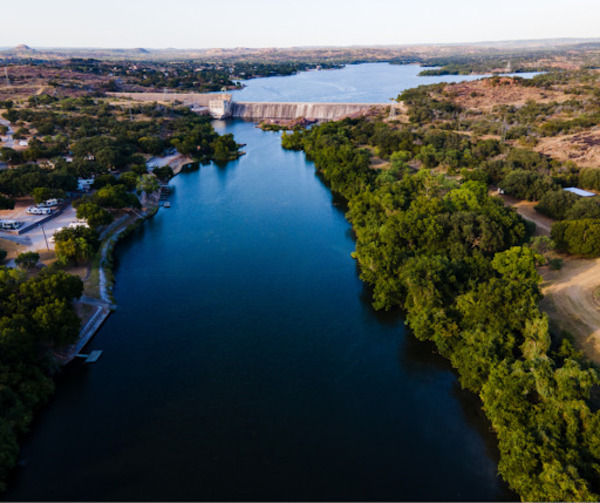
Nestled in the heart of Texas Hill Country, Lake Buchanan is a hidden gem that offers breathtaking views and exceptional fishing opportunities. With its crystal-clear waters and diverse ecosystem, this lake is a haven for anglers seeking a tranquil escape from the hustle and bustle of city life. Whether you’re a seasoned angler or a beginner, Lake Buchanan has something for everyone.
Overview of Lake Buchanan
The Largest Lake in Texas Hill Country
Lake Buchanan is the largest of the Highland Lakes in Texas, spanning over 22,000 acres. It is located on the Colorado River and provides water to the nearby city of Austin. The lake’s immense size and pristine beauty attract nature enthusiasts, boaters, and of course, avid anglers.
A Serene Fishing Paradise
Lake Buchanan is renowned for its tranquil atmosphere, making it an ideal destination for those seeking solitude and relaxation. The calm waters and picturesque surroundings create the perfect backdrop for a memorable fishing experience. Whether you prefer fishing from the shore, a boat, or a kayak, Lake Buchanan has it all.
Location of Lake Buchanan
In the Heart of Texas Hill Country
Lake Buchanan is situated in the picturesque Texas Hill Country, approximately 60 miles northwest of Austin. Its convenient location makes it easily accessible for both locals and tourists looking to escape the city and immerse themselves in nature’s beauty.
Gateway to Adventure
Surrounded by rolling hills and scenic landscapes, Lake Buchanan offers more than just great fishing. The area is home to numerous hiking trails, camping grounds, and wildlife viewing opportunities. After a rewarding day of fishing, you can explore the nearby state parks, wineries, and charming towns that add to the charm of this region.
Key Fish Species in Lake Buchanan
Striped Bass
Lake Buchanan is renowned for its thriving population of striped bass. These powerful and aggressive fish are a favorite among anglers due to their challenging nature and delicious taste. Striped bass can be found in abundance throughout the lake, particularly during the cooler months.
Largemouth Bass
Largemouth bass, the most popular sportfish in Texas, also call Lake Buchanan home. With its ample cover and structure, the lake provides an ideal habitat for these prized game fish. Anglers can expect to reel in largemouth bass weighing up to 10 pounds, making for an exciting day on the water.
Read more: Lake Perris Fishing: Discover the Best Spots and Tips for Anglers at Lake Perris
Catfish
Lake Buchanan offers excellent opportunities for catfish enthusiasts. Channel catfish, blue catfish, and flathead catfish can all be found in the lake’s depths. These bottom-dwelling species provide a thrilling challenge and make for a delicious meal.
Best Fishing Spots in Lake Buchanan
Shaw Island
Shaw Island, located in the northern part of Lake Buchanan, is a hotspot for striped bass fishing. The island’s rocky structure and submerged boulders attract schools of these predatory fish, offering anglers a chance to land some impressive catches.
Llano River Mouth
The Llano River Mouth is another prime fishing spot on Lake Buchanan. This area is known for its shallow, sandy flats, which attract a variety of fish species, including largemouth bass and catfish. Fishing near the river mouth can yield excellent results, especially during the early morning or late evening.
Granite Shoals
Granite Shoals, located on the southeastern shore of the lake, is a favorite among anglers. This area is characterized by its rocky ledges and submerged vegetation, providing a perfect habitat for largemouth bass. The combination of structure and cover makes Granite Shoals an excellent fishing spot throughout the year.
Best Times to Fish at Lake Buchanan
Spring
Springtime is an exciting season for fishing at Lake Buchanan. As the water temperature begins to warm up, the fish become more active, making for prime angling opportunities. Striped bass, largemouth bass, and catfish are all abundant during this time, and you can expect to have a successful day on the water.
Fall
Fall is another fantastic season for fishing at Lake Buchanan. As the weather cools down, the fish become more active, preparing for the winter months. This is the perfect time to target largemouth bass and striped bass, as they feed voraciously to build up their energy reserves.
Winter
While the winter months may be colder, Lake Buchanan still offers excellent fishing opportunities. Striped bass, in particular, are more active during this time and can be found in deeper waters. Dress warmly, bring your thermos of hot coffee, and enjoy a peaceful day of winter fishing.
O.H. Ivie Lake

Nestled in the heart of Texas, O.H. Ivie Lake is a hidden gem for fishing enthusiasts. With its serene beauty, abundant wildlife, and diverse fish population, this reservoir offers a unique fishing experience. Whether you’re an experienced angler or a novice looking for a peaceful retreat, O.H. Ivie Lake has something to offer.
Location
O.H. Ivie Lake is located in central Texas, near the town of Brady. It spans across Coleman and Runnels counties and covers an impressive 19,400 acres. The lake is situated on the Colorado River and is known for its crystal-clear waters and picturesque surroundings.
Key Fish Species
O.H. Ivie Lake is home to a wide variety of fish species, making it a haven for anglers. Some of the key fish species you can find in the lake include:
1. Largemouth Bass
The lake is renowned for its trophy-sized largemouth bass. Anglers come from far and wide to try their luck at catching these prized fish.
2. White Bass
White bass is another popular fish species in O.H. Ivie Lake. These feisty fighters provide anglers with thrilling battles and memorable catches.
3. Crappie
Crappie fishing is also excellent in O.H. Ivie Lake. These delicious panfish can be found in abundance, especially during the spring and fall seasons.
4. Catfish
If you’re a fan of catfish, O.H. Ivie Lake has you covered. Channel catfish and blue catfish can be found in good numbers, providing anglers with a tasty treat.
Best Fishing Spots
When it comes to fishing spots, O.H. Ivie Lake offers plenty of options. Here are some of the best areas to cast your line:
1. Elm Creek
Elm Creek is known for its abundance of submerged vegetation, making it an ideal spot for largemouth bass. Target the edges of the vegetation and structure for the best chance of success.
2. Deep Creek
Deep Creek is a hotspot for white bass and crappie. The creek’s deep channels and structure attract these fish, especially during the spawning season.
3. Rocky Point
Rocky Point is a popular area for catfish. Set up your gear near the rocky structures and use live bait or stink bait for the best results.
4. Sandy Beach
Sandy Beach is a great spot for families looking to relax and fish. It offers easy access to the water and is known for its abundant panfish population.
Best Times to Fish at O.H. Ivie Lake
Anglers often wonder about the best times to fish at O.H. Ivie Lake. Here are some insights to help you plan your fishing trip:
1. Spring
Spring is an excellent time to fish at O.H. Ivie Lake. The water temperatures start to rise, and the fish become more active. Largemouth bass and crappie are particularly active during this season.
2. Fall
Fall is another prime fishing season at O.H. Ivie Lake. As the water cools down, fish become more active in their search for food. White bass and catfish are commonly caught during this time.
3. Early Morning and Late Evening
During the hot summer months, fishing during the early morning and late evening can yield the best results. The cooler temperatures and lower fishing pressure make these times ideal for catching largemouth bass and other species.
4. Cloudy or Overcast Days
Cloudy or overcast days can also be great for fishing at O.H. Ivie Lake. The reduced sunlight makes fish more comfortable and increases their feeding activity.
5. Winter
While winter may not be the most popular season for fishing, O.H. Ivie Lake still offers opportunities to catch fish. Largemouth bass and catfish can be found in deeper waters during this time.
Lake Palestine
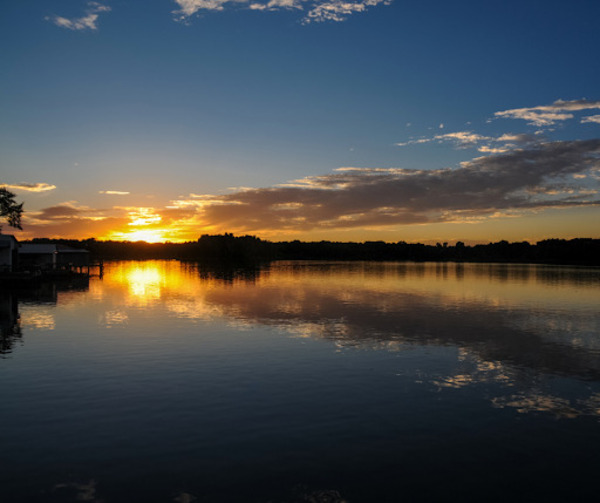
Nestled in the heart of Texas, Lake Palestine is a hidden gem for fishing enthusiasts. With its serene beauty and abundant fish population, this reservoir offers an unforgettable angling experience. Whether you’re a seasoned angler or a novice, Lake Palestine provides the perfect setting to cast your line and reel in some impressive catches.
Overview of Lake Palestine
Lake Palestine is a prominent reservoir located in northeast Texas, just 15 miles southwest of Tyler. Spanning over 25,600 acres, it is one of the largest and most picturesque lakes in the state. Created in 1962 by the construction of the Blackburn Crossing Dam on the Neches River, Lake Palestine offers a plethora of recreational activities, with fishing being a favorite among locals and visitors alike.
Location
Lake Palestine is situated in Anderson, Cherokee, Henderson, and Smith counties, making it easily accessible from various cities in Texas. Here are some of the nearest major cities:
- Tyler: Just a short drive of 15 miles to the northeast of Lake Palestine, Tyler serves as a gateway to this stunning reservoir.
- Athens: Located approximately 40 miles to the northwest, Athens offers convenient access to Lake Palestine.
- Jacksonville: Situated around 24 miles to the east, Jacksonville serves as another nearby city.
Key Fish Species
Lake Palestine is home to a diverse range of fish species, making it a haven for anglers seeking different types of catches. Here are some of the key fish species you can expect to encounter:
- Largemouth Bass: Known for its size and strength, Lake Palestine is renowned for its largemouth bass population. Anglers can reel in trophy-sized bass weighing up to 10 pounds or more.
- White Bass: Lake Palestine is also abundant in white bass, making it an excellent destination for anglers looking for a thrilling fishing experience. These feisty fighters are known for their aggressive feeding behavior.
- Crappie: Crappie fishing is another popular pursuit at Lake Palestine. Anglers can target both black and white crappie, with the springtime offering the best opportunities for a successful catch.
- Catfish: Whether you prefer blue, channel, or flathead catfish, Lake Palestine has it all. These bottom dwellers offer a challenging and rewarding fishing experience.
Best Fishing Spots at Lake Palestine
Lake Palestine boasts numerous fishing spots that cater to different fishing styles and preferences. Here are some of the best locations to cast your line and increase your chances of landing a memorable catch:
1. Flat Creek
Located on the northern end of the lake, Flat Creek is a renowned hotspot for largemouth bass fishing. The creek’s shallow waters and abundant vegetation provide the perfect habitat for bass to thrive. Anglers can explore this area using various techniques, such as topwater lures, crankbaits, and soft plastics.
2. Kickapoo Creek
Situated on the western side of Lake Palestine, Kickapoo Creek is famous for its productive white bass fishing. During the spring spawning season, these fish migrate to the creek, creating an exciting angling experience. Anglers can use jigs, spoons, or live bait to entice the white bass into biting.
3. Neches River Channel
The Neches River Channel, which runs through the middle of Lake Palestine, is an excellent spot for catfish enthusiasts. The deep waters and structure along the channel attract catfish seeking shelter and food. Anglers can use live bait, cut bait, or stink bait to entice these bottom-dwelling giants.
4. Saline Bay
Located on the southeastern side of the lake, Saline Bay is a prime location for crappie fishing. The bay’s submerged brush piles and structure provide ideal hiding spots for crappie. Anglers can use jigs, minnows, or small crankbaits to target these tasty fish.
Best Times to Fish at Lake Palestine
To maximize your chances of a successful fishing trip, it’s essential to consider the optimal times to fish at Lake Palestine. Here are some key factors to keep in mind:
1. Spring
Springtime is arguably the best season for fishing at Lake Palestine. During this period, the water temperature begins to rise, triggering fish activity. Largemouth bass and crappie are particularly active, making it an ideal time to target them.
2. Early Morning and Late Evening
As the sun rises and sets, the temperature fluctuates, creating favorable conditions for fish to feed. Early morning and late evening are prime times to fish, as fish are more active during these cooler periods of the day.
3. Overcast Days
Fish tend to be more active and willing to bite on overcast days when the sun’s intensity is reduced. Take advantage of cloudy weather to increase your chances of a successful catch.
Falcon International Reservoir
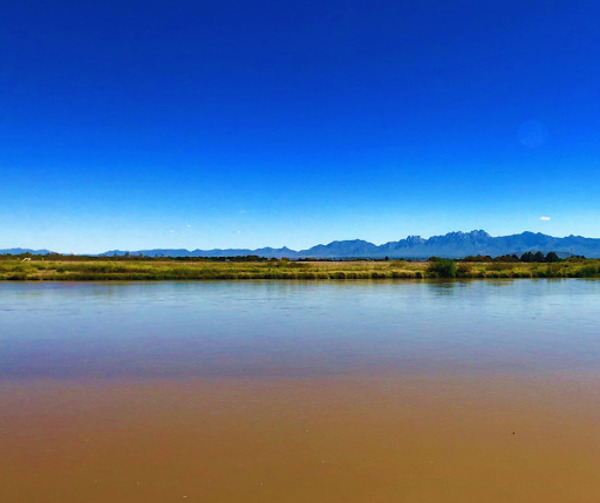
Located in South Texas, Falcon International Reservoir is a hidden gem for fishing enthusiasts. This expansive reservoir, which stretches across the Rio Grande River, is known for its abundant fish population and picturesque scenery. Whether you’re an experienced angler or a beginner looking for a memorable fishing experience, Falcon International Reservoir offers something for everyone.
Location
Falcon International Reservoir is situated on the Rio Grande River, which forms the border between Texas and Mexico. It spans over 83,000 acres of water surface and is located near the town of Zapata, Texas. The reservoir is easily accessible by road, with several boat ramps and fishing piers available for anglers to launch their boats or fish from shore.
Key Fish Species
Falcon International Reservoir is home to a diverse range of fish species, making it a paradise for anglers. Some of the key fish species that can be found in the reservoir include:
1. Largemouth Bass
Largemouth bass are abundant in Falcon International Reservoir and are a popular target for many anglers.
These fish are known for their aggressive nature and can be caught using a variety of fishing techniques such as topwater lures, crankbaits, and soft plastics.
The reservoir has produced numerous trophy-sized largemouth bass, making it a dream destination for bass fishing enthusiasts.
2. White Bass
White bass are another prominent species in Falcon International Reservoir.
These fish are known for their strong fighting ability and can be caught using techniques like trolling, jigging, and casting.
The annual white bass run in the spring attracts anglers from all over, as they gather in large schools and provide exciting fishing opportunities.
3. Catfish
Falcon International Reservoir is also known for its excellent catfish population.
Anglers can target channel catfish, blue catfish, and flathead catfish using various bait such as cut bait, stink bait, and live bait.
Fishing for catfish in the reservoir can be rewarding, as these fish can grow to impressive sizes.
Best Fishing Spots in Falcon International Reservoir
1. Tiger Island
Tiger Island is a renowned fishing spot on Falcon International Reservoir, known for its abundant bass population.
Anglers can find submerged vegetation and structure in this area, providing a perfect habitat for largemouth bass.
Fishermen often have success using topwater lures and soft plastics, especially around the edges of the island.
2. Salado Creek
Salado Creek is a productive fishing spot located on the upper end of the reservoir.
This area is known for its deep channels and structure, which attract fish such as largemouth bass and catfish.
Anglers can target these fish by casting along the creek channels and drop-offs using a variety of baits and lures.
3. Falcon State Park
Falcon State Park offers excellent fishing opportunities for anglers of all skill levels.
With its multiple fishing piers and boat ramps, the park provides easy access to the reservoir.
The shoreline around the park is known for its submerged vegetation, making it an ideal spot for bass fishing.
Best Times to Fish in Falcon International Reservoir
1. Spring
Spring is considered the prime time for fishing in Falcon International Reservoir.
During this season, the water temperature rises, triggering the spawning activities of various fish species.
Anglers can target largemouth bass during their spawning period, as they become more active and aggressive.
2. Fall
Fall is another excellent time to fish in Falcon International Reservoir.
As the water cools down, largemouth bass become more active and feed heavily in preparation for winter.
Anglers can have success using a variety of lures and baits during this time.
3. Early Morning and Late Evening
Fishing during the early morning or late evening can be highly productive in Falcon International Reservoir.
During these times, the water is cooler, and the fish are more active, making them more likely to bite.
Anglers can target bass and other fish species using topwater lures and other surface baits.
Lake Texoma
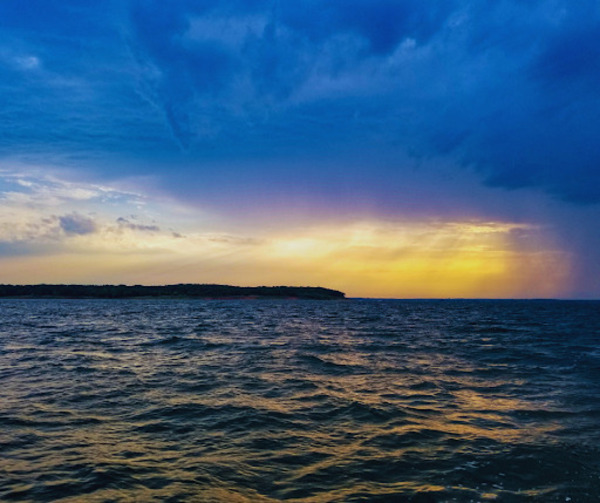
Nestled on the border between Texas and Oklahoma, Lake Texoma is a hidden gem for fishing enthusiasts. With its vast expanse of water spanning over 89,000 acres, Lake Texoma offers endless opportunities for anglers seeking to reel in their next big catch. Home to a diverse range of fish species, this reservoir attracts both recreational and professional fishermen alike.
Location
Lake Texoma is situated on the Red River, forming part of the Texas-Oklahoma border. It is approximately 75 miles north of Dallas, Texas, and 121 miles southeast of Oklahoma City, Oklahoma. The lake is easily accessible, making it a popular fishing destination for locals and tourists alike.
Key Fish Species
Lake Texoma is renowned for its diverse fish population, attracting anglers from far and wide. Here are some of the key fish species you can expect to encounter when fishing at Lake Texoma:
- Striped Bass: Known as the “Stripers,” these feisty fish are the prized catch of Lake Texoma. They can grow to impressive sizes, weighing up to 50 pounds. Striped Bass fishing at Lake Texoma is a thrilling experience that will test the skills of even the most seasoned anglers.
- Largemouth Bass: Another popular game fish at Lake Texoma, Largemouth Bass provides an exciting challenge for anglers. With their aggressive nature, these bass can provide a thrilling fight when caught.
- Smallmouth Bass: Known for their strength and acrobatic jumps, Smallmouth Bass can be found in the rocky areas of Lake Texoma. Anglers who enjoy a challenging fight will appreciate the sport these fish offer.
- Catfish: Lake Texoma is teeming with various species of catfish, including Blue Catfish and Channel Catfish. These bottom-dwelling fish provide a unique fishing experience and are sought after for their delicious flesh.
- Crappie: Crappie can be found in abundance in Lake Texoma, making it a favorite among panfish enthusiasts. These fish are known for their tasty and flaky white meat.
Best Fishing Spots at Lake Texoma
North Island
Located near the Denison Dam, North Island is a prime fishing spot for Striped Bass and Largemouth Bass. The shallow waters and abundant cover make it an ideal location to target these species.
Washita Flats
Situated in the Washita River arm of the lake, Washita Flats is known for its submerged islands and channels. Anglers can find a variety of fish species here, including Striped Bass, Largemouth Bass, and Catfish.
Buncombe Creek
Buncombe Creek is a popular fishing spot for crappies and catfish. The creek’s calm waters and abundant vegetation make it an excellent location for these species.
Rock Creek
Rock Creek is a preferred spot for Smallmouth Bass fishing. The rocky structure and clear waters provide the perfect habitat for these elusive fish.
Best Times to Fish at Lake Texoma
The optimal times for fishing at Lake Texoma vary depending on the target species. Here are some general guidelines to help plan your fishing trips:
Striped Bass
Spring and fall are the best seasons for Striped Bass fishing at Lake Texoma. During these times, the fish are more active and can be found in shallow waters.
Largemouth Bass
Largemouth Bass can be caught year-round at Lake Texoma, but the prime seasons are spring and fall. The cool water temperatures during these times make the bass more active and eager to bite.
Smallmouth Bass
Smallmouth Bass fishing is best during the spring and summer months when the water is warmer. These fish prefer rocky areas and can be found near submerged structures.
Catfish
Catfish can be caught year-round at Lake Texoma, but they are most active during the warmer months. Early morning and late evening hours tend to be the most productive times for catfishing.
Crappie
Crappie fishing is excellent during the spring months when they move to shallow waters to spawn. Look for submerged structures and brush piles for the best chances of landing a big catch.
Alan Henry Reservoir

Nestled in the heart of Texas, Alan Henry Reservoir is a hidden gem for fishing enthusiasts seeking tranquility and abundant catches. With its picturesque landscapes and diverse aquatic ecosystem, this reservoir offers an unforgettable fishing experience. Whether you are an experienced angler or a novice looking to cast your first line, Alan Henry Reservoir provides endless opportunities for a memorable fishing adventure.
Location
Alan Henry Reservoir is located in Garza County, Texas, approximately 65 miles southeast of Lubbock. This man-made lake spans over 2,800 acres and is surrounded by rolling hills and scenic vistas. The reservoir is situated on the Double Mountain Fork of the Brazos River and serves as a vital water supply source for the surrounding communities.
Key Fish Species
Alan Henry Reservoir boasts a diverse range of fish species, making it a paradise for anglers. Some of the key fish species you can expect to encounter include:
- Largemouth Bass
- White Bass
- Crappie
- Channel Catfish
- Flathead Catfish
Best Fishing Spots at Alan Henry Reservoir
North Shore
The North Shore of Alan Henry Reservoir is known for its rocky structures and abundant underwater vegetation, making it an ideal spot for bass fishing. The shallow waters near the shoreline provide excellent opportunities for casting topwater lures and targeting largemouth bass.
South Shore
The South Shore is renowned for its deep drop-offs and submerged structures, creating a haven for crappie and catfish. Anglers can find success by targeting these species near the submerged timber and brush piles scattered throughout the area.
Double Mountain Fork
The Double Mountain Fork, the main river channel that feeds into the reservoir, is an excellent spot for white bass fishing. During the spawning season, these fish migrate up the river, providing anglers with exciting opportunities to catch them using jigs and crankbaits.
Best Times to Fish at Alan Henry Reservoir
Spring
Spring is an optimal time to fish at Alan Henry Reservoir, as the water begins to warm up, and the fish become more active. Largemouth bass, crappie, and white bass are particularly plentiful during this time, making it an ideal season for anglers.
Summer
During the summer months, fishing at Alan Henry Reservoir can be challenging due to the hotter temperatures. However, early mornings and late evenings provide cooler conditions, and the fish are more likely to be active during these times.
Fall
Fall is considered one of the best seasons for fishing at Alan Henry Reservoir. As the water cools down, largemouth bass become more active, and the feeding frenzy begins. Additionally, white bass and crappie can still be found in abundance, making it a fruitful time for anglers.
Winter
Winter fishing at Alan Henry Reservoir can be rewarding for those willing to brave the colder temperatures. Largemouth bass and catfish are the main targets during this season, and they can be found in deeper waters. Slow-moving presentations and live bait are often successful during the winter months.
Granger Lake
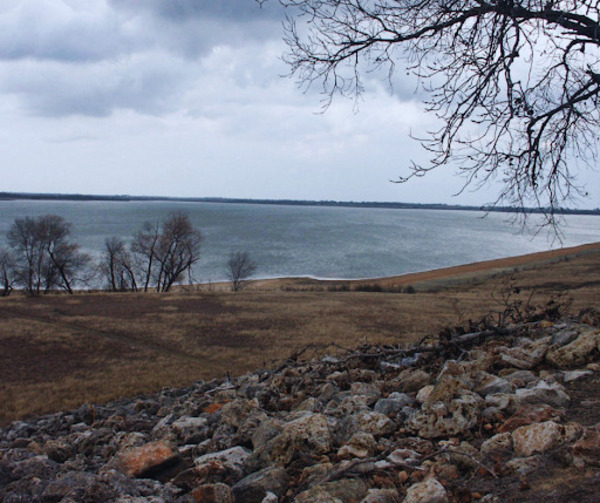
Located in the heart of Central Texas, Granger Lake is a hidden gem that offers a fishing experience like no other. This picturesque reservoir, nestled within the rolling hills of Williamson County, attracts anglers from near and far with its abundant fish population and breathtaking natural beauty.
Overview of Granger Lake
What is Granger Lake?
Granger Lake, also known as Lake Granger, is a reservoir formed by the Granger Dam on the San Gabriel River. Built in the 1970s, the lake covers approximately 4,400 acres and has a shoreline of over 25 miles. The lake serves as a water supply for nearby towns and cities and is managed by the U.S. Army Corps of Engineers.
Why is Granger Lake Popular among Anglers?
Granger Lake is renowned for its excellent fishing opportunities, making it a popular destination for anglers of all skill levels. Here are some reasons why it attracts fishing enthusiasts:
- Diverse Fish Species: Granger Lake is home to a wide variety of fish species, including largemouth bass, white bass, crappie, catfish, and sunfish. These species provide ample opportunities for anglers to test their skills and reel in a big catch.
- Scenic Surroundings: The picturesque landscape surrounding Granger Lake adds to the overall fishing experience. The rolling hills, lush vegetation, and crystal-clear waters create a serene atmosphere that anglers can enjoy while waiting for a bite.
- Accessibility: Granger Lake is easily accessible, with multiple boat ramps and fishing piers available for anglers. Whether you prefer fishing from a boat or casting your line from the shore, there are plenty of options to choose from.
Location of Granger Lake
Where is Granger Lake Located?
Granger Lake is located in central Texas, approximately 40 miles northeast of Austin. It is situated within Williamson County, near the town of Granger. The lake is easily accessible via State Highway 95 and State Highway 29, making it a convenient destination for both local and out-of-state anglers.
How to Get to Granger Lake?
Here are some directions to help you get to Granger Lake:
- From Austin: Take I-35 N and exit onto State Highway 29 E towards Georgetown. Follow State Highway 29 E for approximately 27 miles until you reach Granger. From there, follow signs to the lake.
- From Dallas: Take I-35 E southbound and exit onto State Highway 29 W towards Georgetown. Continue on State Highway 29 W for approximately 125 miles until you reach Granger. Follow signs to the lake.
- From Houston: Take US-290 W towards Austin. Merge onto TX-130 N and continue for approximately 95 miles. Take exit 423 towards Granger and follow signs to the lake.
Key Fish Species at Granger Lake
What Fish Species Can You Find at Granger Lake?
Granger Lake is home to a diverse range of fish species, offering anglers a thrilling fishing experience. Here are some of the key fish species you can find at Granger Lake:
- Largemouth Bass: Granger Lake is known for its excellent largemouth bass population. These feisty fish can be found in abundance throughout the lake and provide anglers with exciting catch-and-release opportunities.
- White Bass: White bass are another popular species in Granger Lake. They are most commonly found near the dam and in the main river channel. Anglers can enjoy fast-paced action during the white bass spawning runs in the spring.
- Crappie: Granger Lake is a crappie angler’s paradise. Black crappie and white crappie can be found in good numbers, especially around submerged structures and brush piles. Spring and fall are the best times to target crappie at Granger Lake.
- Catfish: Granger Lake offers excellent opportunities for catfish anglers. Channel catfish and blue catfish are the most commonly targeted species. Anglers can target catfish using a variety of techniques, including bottom fishing and trotlines.
- Sunfish: Sunfish, including bluegill and redear sunfish, can be found in abundance at Granger Lake. They provide great fun for anglers, especially those fishing with lightweight tackle or fly fishing.
Best Fishing Spots at Granger Lake
Where are the Best Fishing Spots at Granger Lake?
Granger Lake is dotted with numerous fishing spots that offer great opportunities for anglers. Here are some of the best fishing spots to explore:
- Willis Creek: Located on the upper end of the lake, Willis Creek is known for its excellent largemouth bass fishing. The creek is a popular spot for anglers who enjoy fishing in shallow waters and targeting bass.
- San Gabriel River Channel: The main river channel of the San Gabriel River, which feeds into Granger Lake, is another prime fishing spot. It is particularly productive for white bass fishing during the spawning runs in the spring.
- Rock Dams: The rock dams located throughout the lake provide excellent habitat for a variety of fish species, including bass, crappie, and catfish. Fishing around these structures can yield promising results.
What Techniques Work Best at Granger Lake?
The fishing techniques that work best at Granger Lake depend on the targeted fish species. Here are some popular techniques used by anglers:
- Largemouth Bass: Topwater lures, plastic worms, and crankbaits are popular choices for targeting largemouth bass. Fishing around submerged structures and vegetation can be productive.
- White Bass: Anglers often use jigs, spoons, and small crankbaits to target white bass. During the spawning runs, fishing in the main river channel using white or chartreuse-colored lures can be highly effective.
- Crappie: Crappie can be targeted using jigs, minnows, or small spinnerbaits. Fishing near submerged structures, such as brush piles or fallen trees, is a proven technique for catching crappie.
- Catfish: Bottom fishing with cut bait, stink bait, or live bait is a popular method for targeting catfish at Granger Lake. Trotlines and juglines can also be used to cover a larger area.
Best Times to Fish at Granger Lake
When is the Best Time to Fish at Granger Lake?
To maximize your chances of success, it’s important to know the best times to fish at Granger Lake. Here are some factors to consider:
- Season: Spring and fall are generally considered the best seasons for fishing at Granger Lake. During these times, fish are more active and feed heavily.
- Weather Conditions: Overcast days and periods of mild weather can trigger increased fish activity. Fishing during these conditions can improve your chances of catching fish.
- Time of Day: Early morning and late evening are prime times for fishing at Granger Lake. During these twilight hours, fish are often more active and more likely to bite.
- Moon Phase: Many anglers believe that fishing during the new moon and full moon phases can lead to increased fish activity. However, it’s important to note that fish behavior can vary, and other factors should also be considered.
Meredith Reservoir
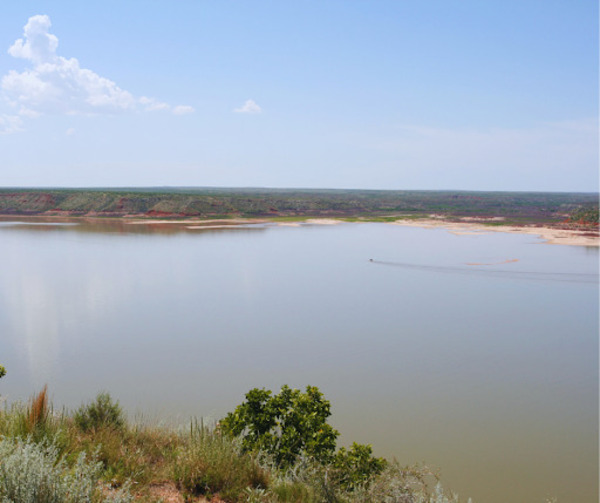
Location
Meredith Reservoir is located in the Texas Panhandle, near the town of Sanford. It is part of the Canadian River watershed and covers an area of approximately 16,500 acres. The reservoir was created by the Sanford Dam, which was completed in 1965. Its strategic location, just a short drive from Amarillo, makes it easily accessible for anglers from all over Texas.
Key Fish Species
Meredith Reservoir is home to a diverse range of fish species, making it a haven for anglers of all preferences. Some of the key fish species you can expect to catch at Meredith Reservoir include:
- Largemouth Bass
- Smallmouth Bass
- White Bass
- Catfish (Channel, Blue, and Flathead)
- Crappie
- Walleye
- Perch
- Carp
Best Fishing Spots at Meredith Reservoir
1. The Dam Area
The area near the Sanford Dam is well-known for its excellent fishing opportunities. The deep water and structure around the dam create a prime habitat for a variety of fish species. Anglers often find success targeting largemouth bass, white bass, and catfish in this area.
2. Brushy Cove
Located on the southwest side of the reservoir, Brushy Cove is a popular spot for anglers seeking Largemouth Bass. The cove is filled with submerged vegetation, providing ample cover for the bass to hide and ambush their prey. This spot is best accessed by boat, allowing anglers to explore the cove’s nooks and crannies.
3. Buried Tree Area
The Buried Tree Area, located in the eastern part of the reservoir, is a hidden gem for anglers seeking catfish and crappie. This area is characterized by submerged trees and brush piles, which provide ideal habitat for these species. Anglers often have success using live bait or jigs in this area.
Best Times to Fish at Meredith Reservoir
1. Early Morning
The early morning hours, just before sunrise, can be one of the best times to fish at Meredith Reservoir. During this time, the water is typically calm, and fish are more active, making them more likely to bite. This is especially true during the warmer months when the sun is not as intense.
2. Late Evening
Similar to the early morning, the late evening hours can also be productive for fishing. As the sun starts to set, the water cools down, and fish become more active. This is a great time to target species like bass and catfish, which tend to feed more aggressively during these hours.
3. Spring and Fall
Spring and fall are considered the best seasons for fishing at Meredith Reservoir. During these transitional periods, fish are more active, preparing for spawning or stocking up for the winter. The cooler water temperatures and changing weather patterns make for ideal fishing conditions.
Choke Canyon Reservoir
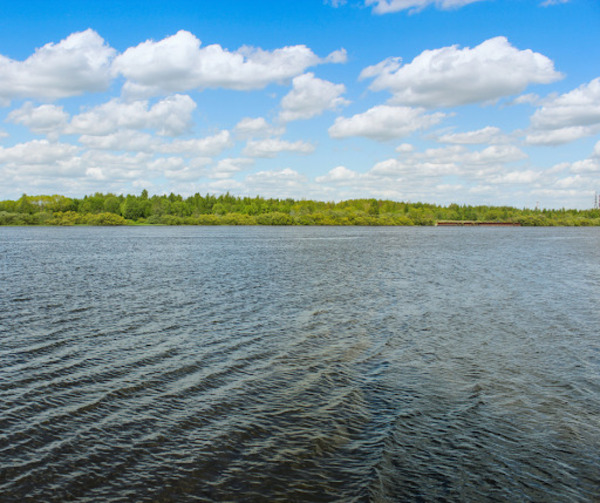
Located in south Texas, Choke Canyon Reservoir is a hidden gem for fishing enthusiasts. With its picturesque landscapes and abundant fish population, this reservoir offers a truly unforgettable angling experience. Whether you are a seasoned angler or a novice looking to cast your line, Choke Canyon Reservoir is the perfect destination for your next fishing adventure.
Overview of Choke Canyon Reservoir
Choke Canyon Reservoir is a sprawling water body that covers approximately 25,670 acres. It was created in the early 1980s by the construction of a dam on the Frio River, a tributary of the Nueces River. The reservoir serves as a reliable water source for the surrounding communities and provides a haven for a wide variety of fish species.
Location
Choke Canyon Reservoir is nestled in the heart of southern Texas, approximately 90 miles south of San Antonio. It straddles the border between Live Oak and McMullen counties. The reservoir is easily accessible by road, making it a convenient destination for anglers from all over the state.
Key Fish Species
Choke Canyon Reservoir is renowned for its diverse fish population. Anglers can expect to encounter a variety of species, including:
- Largemouth Bass: The reservoir is famous for its trophy-sized largemouth bass, attracting anglers seeking the thrill of a big catch.
- White Bass: White bass are plentiful in Choke Canyon Reservoir and provide excellent angling opportunities, especially during their spawning season.
- Crappie: Crappies are another popular species found in the reservoir. They offer a challenging yet rewarding fishing experience.
- Catfish: Choke Canyon Reservoir is home to several species of catfish, including channel catfish and blue catfish. These bottom-dwelling fish provide a thrilling fight for anglers.
Best Fishing Spots
To make the most of your fishing excursion at Choke Canyon Reservoir, consider exploring these top fishing spots:
- South Shoreline: The south shoreline is known for its submerged vegetation, which provides an ideal habitat for largemouth bass. Cast your line near the vegetation edges for a chance to catch a trophy-sized bass.
- Calliham Unit: The Calliham Unit is a favorite among anglers due to its diverse fish population. Here, you can target largemouth bass, white bass, crappie, and catfish.
- North Shoreline: The north shoreline offers excellent fishing opportunities, particularly during the spawning seasons. Look for areas with submerged structures and vegetation for a higher chance of success.
- South Creek: South Creek is a tributary of the Frio River and is known for its abundance of catfish. Set up near the creek’s mouth for a chance to reel in some impressive catches.
Best Times to Fish
Timing is crucial when it comes to fishing at Choke Canyon Reservoir. Consider the following tips to maximize your chances of success:
- Spring: Spring is an excellent time to fish for largemouth bass and white bass. As the water warms up, these species become more active and move towards the shallower areas to spawn.
- Fall: Fall is another prime season for fishing at Choke Canyon Reservoir. As the temperatures cool down, largemouth bass and crappie become more active, providing ample opportunities for anglers.
- Early Morning and Late Evening: During the hot summer months, fishing is most productive during the early morning and late evening hours when the water is cooler and fish are more active.
- Avoid Extreme Heat: It’s best to avoid fishing during the peak heat of the day, especially in the summer. Fish tend to be less active during this time, seeking shelter in deeper, cooler waters.
Sam Rayburn Reservoir
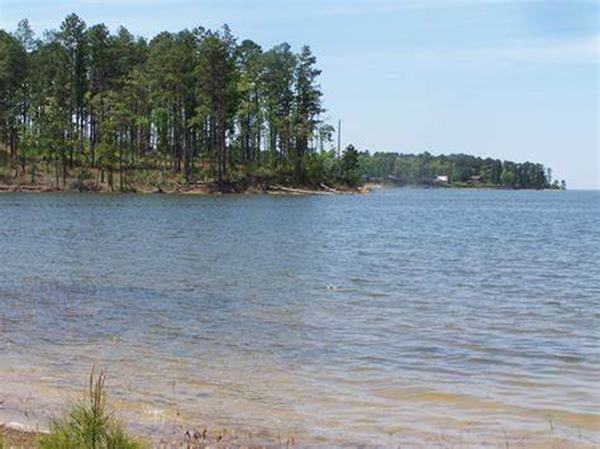
Nestled in the heart of the Lone Star State, the Sam Rayburn Reservoir is a hidden gem for fishing enthusiasts. With its sprawling waters and an abundance of fish species, this reservoir offers a truly unforgettable experience for avid anglers. Whether you’re seeking trophy-sized bass or simply looking to enjoy a peaceful day on the water, the Sam Rayburn Reservoir has something to offer for everyone.
Overview of Sam Rayburn Reservoir
The Size and Beauty of Sam Rayburn Reservoir
The Sam Rayburn Reservoir, also known as Lake Sam Rayburn, is one of the largest reservoirs in Texas. It covers a vast area of approximately 114,500 acres, making it an ideal destination for boating, fishing, and other water activities. The reservoir is located in the picturesque Piney Woods region of eastern Texas, surrounded by lush forests and serene landscapes.
Creation and Purpose of Sam Rayburn Reservoir
Constructed in the late 1950s, the Sam Rayburn Reservoir was primarily built for flood control and water conservation purposes. However, over the years, it has gained immense popularity among anglers due to its thriving fish population and excellent fishing conditions.
Location of Sam Rayburn Reservoir
The Sam Rayburn Reservoir is situated in the southeastern part of Texas, near the town of Jasper. Its convenient location, just a few hours’ drive from major cities like Houston and Dallas, makes it easily accessible for anglers from all over the state and beyond. The reservoir is nestled within the confines of the Angelina National Forest and is surrounded by the rolling hills and dense forests of eastern Texas.
Key Fish Species in Sam Rayburn Reservoir
Bass Fishing Haven
Sam Rayburn Reservoir is renowned for its excellent bass fishing opportunities. The reservoir is home to an abundant population of largemouth bass, making it a dream destination for bass anglers. The reservoir has gained a reputation for producing trophy-sized bass, with many anglers successfully reeling in fish weighing over 10 pounds.
Other Prominent Fish Species
Apart from largemouth bass, the Sam Rayburn Reservoir boasts a diverse range of fish species. Anglers can also find the following fish within its waters:
- Crappie
- Catfish
- Sunfish
- White Bass
Best Fishing Spots in Sam Rayburn Reservoir
Five Finger Area
The Five Finger Area is a well-known hotspot for anglers due to its underwater structure and ample cover, providing a perfect habitat for bass. This area is a favorite among experienced anglers looking to catch trophy-sized largemouth bass.
Veach Basin
Veach Basin is another popular fishing spot known for its submerged vegetation and standing timber. Anglers often find success here by targeting largemouth bass and crappie lurking amidst the cover.
Black Forest
Located on the western side of the reservoir, the Black Forest is a prime fishing spot for both bass and crappie. Its submerged timber and brush provide excellent hiding places for fish, making it an ideal location for anglers seeking a fruitful day on the water.
Best Times to Fish in Sam Rayburn Reservoir
Spring
During the spring months, the Sam Rayburn Reservoir comes alive with fishing opportunities. As the water warms up, largemouth bass become more active, making it an ideal time to target them. Crappies and catfish also show increased activity during this season.
Fall
Fall is another excellent time to fish in the Sam Rayburn Reservoir. As the water cools down, largemouth bass are more likely to be found in shallow areas, making them easier to catch. Additionally, white bass fishing can be particularly productive during the fall months.
Early Morning and Late Evening
For anglers looking to beat the heat and increase their chances of success, early morning and late evening are the optimal times to fish. During these hours, fish are more active and tend to feed closer to the water’s surface.
Caddo Lake
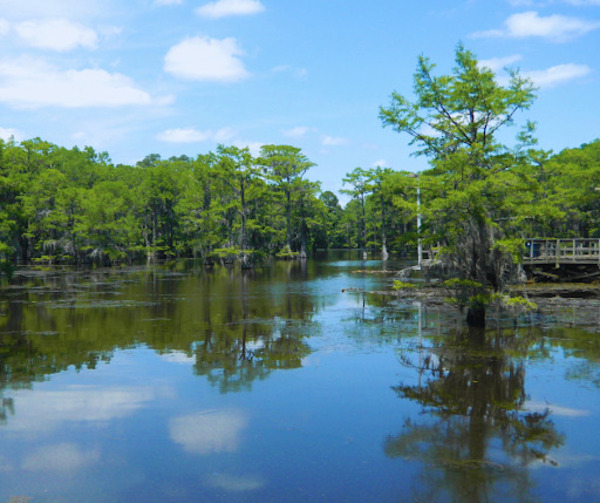
Location
Caddo Lake is situated on the border between Texas and Louisiana, making it easily accessible from both states. It covers approximately 26,800 acres and is known for its diverse ecosystem and scenic beauty. The lake is characterized by its enchanting cypress trees, moss-draped landscapes, and abundant wildlife.
Key Fish Species
Caddo Lake is home to a plethora of fish species, making it a paradise for anglers. Some of the key fish species found in Caddo Lake include:
1. Largemouth Bass
Largemouth bass are abundant in Caddo Lake and provide anglers with thrilling fishing opportunities.
The lake’s dense vegetation and submerged structures create excellent hiding spots for these fish.
Largemouth bass in Caddo Lake can grow to impressive sizes, making it a popular destination for trophy hunters.
2. Crappie
Crappies are another popular fish species in Caddo Lake, particularly during the spring and fall seasons.
Anglers can find both black and white crappie, providing a variety of fishing experiences.
The lake’s shallow waters and submerged vegetation serve as perfect habitats for crappie.
3. Catfish
Caddo Lake is known for its abundant catfish population, including channel catfish, blue catfish, and flathead catfish.
Anglers can enjoy both bank fishing and boat fishing for catfish in the lake.
Catfish can be caught throughout the year, but the best times to target them are during the warmer months.
Best Fishing Spots in Caddo Lake
1. Big Cypress Bayou
Big Cypress Bayou is a prime fishing spot in Caddo Lake, known for its diverse fish population.
Anglers can expect to catch largemouth bass, crappie, catfish, and various sunfish species in this area.
The bayou offers calm and secluded fishing spots, allowing anglers to enjoy a peaceful day on the water.
2. Goose Prairie
Goose Prairie is a shallow area in Caddo Lake that attracts a variety of fish species, including largemouth bass and crappie.
Anglers can explore the numerous submerged structures and vegetation patches that serve as hiding spots for fish.
This area is known for its abundant wildlife, providing a unique and immersive fishing experience.
3. Potters Point
Potters Point is a popular fishing spot on the Texas side of Caddo Lake.
Anglers can target largemouth bass, crappie, and catfish in this area.
The submerged stumps and vegetation in Potters Point create excellent fishing opportunities.
Best Times to Fish in Caddo Lake
1. Spring
Spring is an excellent time to fish in Caddo Lake, as the weather begins to warm up and fish become more active.
Largemouth bass and crappie can be found near shallow areas and vegetation during this season.
2. Fall
Fall is another prime fishing season in Caddo Lake, as fish prepare for the winter months.
Anglers can target largemouth bass and crappie, as they move closer to the shorelines and feed more actively.
3. Early Morning and Late Evening
Fishing during the early morning and late evening hours can be highly productive in Caddo Lake.
Fish tend to be more active during these times, particularly during the warmer months.
Lake Amistad
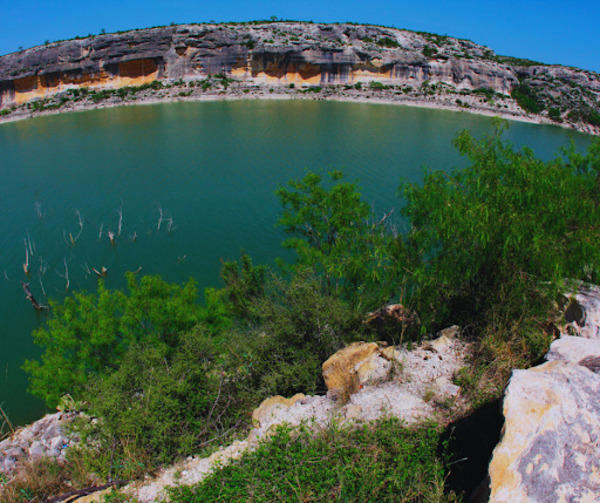
Nestled along the Texas-Mexico border, Lake Amistad is a natural wonder that attracts anglers from all over the world. With its crystal-clear waters, diverse fish population, and stunning landscapes, it has earned its reputation as a fishing paradise.
Overview
Lake Amistad is a man-made reservoir that was created as a result of the Amistad Dam on the Rio Grande River. The reservoir spans over 64,900 acres and is known for its deep canyons, towering cliffs, and clear blue waters. It is managed by the National Park Service and offers a wide range of recreational activities, with fishing being one of the main attractions.
Read more: Reelfoot Lake Fishing: A Hidden Gem for Anglers | Everything You Need to Know
Location
Lake Amistad is located in Val Verde County, Texas, approximately 12 miles northwest of the city of Del Rio. It is conveniently accessible by car, with several access points and boat ramps available for visitors. The lake stretches across the border between the United States and Mexico, offering anglers the unique opportunity to fish in both countries.
Key Fish Species
Lake Amistad is home to a diverse range of fish species, making it a haven for anglers seeking a variety of fishing experiences. Some of the key fish species found in the lake include:
- Largemouth Bass: Lake Amistad is renowned for its trophy-sized largemouth bass. The lake’s abundant vegetation provides the perfect habitat for these prized fish, making it a favorite destination for bass fishing enthusiasts.
- Smallmouth Bass: Alongside largemouth bass, smallmouth bass can also be found in Lake Amistad. These feisty and aggressive fish offer exciting challenges for anglers looking for a thrilling fishing experience.
- Striped Bass: Lake Amistad boasts a healthy population of striped bass, providing anglers with the opportunity to reel in these hard-fighting fish. Striped bass can often be found in the deeper parts of the lake, making them a sought-after catch for experienced anglers.
- White Bass: White bass can be found in abundance in Lake Amistad, particularly during the spring spawning season. These fish put up a great fight and are known for their impressive numbers, making them a favorite target for anglers.
- Catfish: Lake Amistad is home to various species of catfish, including channel catfish and blue catfish. Anglers can try their luck at catching these bottom-dwelling fish, which can grow to impressive sizes.
Best Fishing Spots
Lake Amistad offers numerous fishing spots that cater to anglers of all skill levels. Here are some of the best fishing spots to explore:
- Diablo East: Located on the eastern side of the lake, Diablo East is known for its deep waters and submerged structure. Anglers can find an abundance of largemouth bass and striped bass in this area.
- Box Canyon: As the name suggests, Box Canyon is a scenic spot with towering cliffs and narrow channels. This area is popular for targeting smallmouth bass and largemouth bass.
- Rough Canyon: Situated on the western side of the lake, Rough Canyon offers excellent fishing opportunities for striped bass and largemouth bass. The area is known for its rocky structure and drop-offs.
- San Pedro: San Pedro is a popular spot for catfish anglers, as it offers deep water and plenty of cover for these bottom-dwelling fish. Anglers can also find largemouth bass and striped bass in this area.
Best Times to Fish
To increase your chances of a successful fishing trip at Lake Amistad, it’s important to consider the best times to fish. Here are some tips:
- Spring: Spring is an ideal time to fish at Lake Amistad, as fish become more active after the winter months. During this time, largemouth bass and white bass can be found in shallow waters, while striped bass can be targeted in deeper areas.
- Fall: Fall is another prime season for fishing at Lake Amistad. As the water cools down, fish become more active and feed voraciously in preparation for winter. Largemouth bass, smallmouth bass, and striped bass are commonly caught during this season.
- Early Morning and Late Evening: During the hotter months, early morning and late evening are the best times to fish. Fish tend to be more active during these cooler hours, providing anglers with better opportunities for successful catches.
Toledo Bend Reservoir
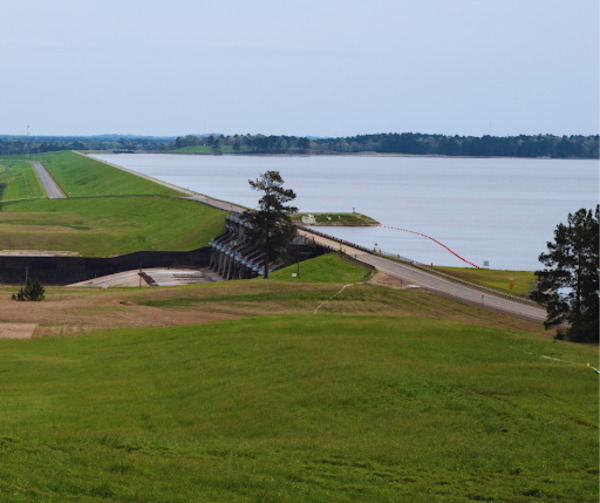
Overview of Toledo Bend Reservoir
Toledo Bend Reservoir, located on the border of Texas and Louisiana, is one of the largest man-made reservoirs in the United States. Spanning over 185,000 acres, this reservoir was created by damming the Sabine River. Its vast size makes it an angler’s paradise and a popular destination for fishing tournaments and recreational fishing alike.
Location
Toledo Bend Reservoir is nestled in the heart of East Texas and West Louisiana. The reservoir stretches across Sabine, Shelby, and Newton counties in Texas, and Sabine and DeSoto parishes in Louisiana. Its proximity to major cities, such as Houston and Shreveport, makes it easily accessible for both local and out-of-state anglers.
Key Fish Species
Toledo Bend Reservoir is home to a wide variety of fish species, making it a haven for anglers seeking diverse fishing opportunities. Some of the key fish species that can be found in the reservoir include:
- Largemouth Bass
- White Bass
- Crappie
- Channel Catfish
- Blue Catfish
- Striped Bass
Best Fishing Spots
Toledo Bend Reservoir offers numerous fishing spots that are well-known for their abundance of fish. Here are some of the best fishing spots to explore:
1. Huxley Bay
Located on the Texas side of the reservoir, Huxley Bay is a popular spot for anglers targeting largemouth bass and crappie. The bay provides ample cover and structure, making it an ideal habitat for these fish species.
2. Patroon Creek
Situated on the Louisiana side, Patroon Creek is known for its excellent white bass fishing. The creek’s flowing water and rocky structure attract schools of white bass during their spawning season.
3. Indian Mounds Recreation Area
Indian Mounds Recreation Area is a prime location for anglers seeking trophy-sized largemouth bass. The area offers a combination of deep water, submerged structure, and vegetation, creating an ideal habitat for these prized fish.
4. Chicken Coop
Located near the Pendleton Bridge, Chicken Coop is a favored spot for crappie anglers. The area is abundant in submerged timber, which serves as the perfect structure for crappie to hide and feed.
Best Times to Fish
To maximize your fishing success at Toledo Bend Reservoir, it’s important to know the best times to fish. Consider the following factors when planning your fishing trip:
1. Spring
Spring is an excellent time for fishing at Toledo Bend Reservoir. As the water temperature rises, largemouth bass become more active and move to the shallower areas to spawn. Crappie can also be found near submerged structure during this season.
2. Fall
Fall offers another great opportunity for fishing at Toledo Bend Reservoir. As the water cools down, largemouth bass become more active again, making it an ideal time to target them. Additionally, the cooler water temperatures trigger the migration of white bass, resulting in exceptional fishing opportunities.
3. Early Morning and Late Evening
During the summer months, when the Texas heat is at its peak, it’s best to fish during the early morning and late evening. The cooler temperatures during these times of the day make the fish more active and increase your chances of success.
How to Choose the Best Lake for Texas Fishing
When it comes to fishing in Texas, the options are endless. With its vast network of lakes, rivers, and coastal areas, Texas offers anglers a diverse range of fishing opportunities. Whether you are a seasoned angler or a beginner looking to cast a line, choosing the right lake is crucial for a successful fishing trip.
Factors to Consider when Choosing a Fishing Lake in Texas
1. Location
Proximity
- Consider how far you are willing to travel to reach the lake.
- Determine if you prefer a lake that is closer to urban areas or one that is more secluded.
Accessibility
- Check if the lake has public access points such as boat ramps or fishing piers.
- Look for amenities like parking, restrooms, and picnic areas.
2. Fish Species
Target Species
- Decide which fish species you want to target, such as bass, catfish, or crappie.
- Research lakes that are known for abundant populations of your desired fish species.
Fishery Management
- Look into the lake’s fishery management practices, such as stocking programs or size and bag limits.
- Consider if you prefer a lake that focuses on trophy fish or one that offers a variety of sizes.
3. Lake Size and Depth
Lake Size
- Determine if you prefer a larger lake with more room to explore or a smaller lake for a more intimate fishing experience.
- Consider the impact of wind and waves on larger lakes.
Lake Depth
- Research the average depth of the lake and its variations throughout the year.
- Different fish species prefer different depths, so choose a lake that suits your target species.
4. Lake Conditions
Water Clarity
- Determine if you prefer clear or murky water conditions.
- Clear water may require more finesse and stealth, while murky water can be advantageous for certain fish species.
Water Temperature
- Consider the optimal water temperature for your target fish species.
- Different lakes may have different temperature patterns throughout the year.
5. Fishing Regulations
Licensing
- Ensure that you have the appropriate fishing license for the lake you choose.
- Familiarize yourself with Texas fishing regulations, including size and bag limits.
Special Restrictions
- Some lakes may have special restrictions, such as catch-and-release-only areas or seasonal closures.
- Research and understand any specific regulations that apply to the lake you plan to fish.
In conclusion, one of the best lakes to fish in Texas is Lake Fork, the best lake in Texas for catching largemouth bass. Bass fishing is extremely popular in the state of Texas, and this lake is consistently ranked as one of the best bass fishing spots in the United States.

Bass fishing is also popular in Texas, and many anglers come to this lake specifically for bass fishing. Perch are not the main focus of fishing at Lake Fork, second only to bass. However, bass fishing can also be successful in this lake.
Texas is also known for its striped bass population, and Texoma Reservoir on the Oklahoma border is one of the best places in Texas for striped bass fishing. Whether you are an avid angler or just enjoy fishing as a hobby, this lake is a great place to experience the thrill of bass fishing.
With its prime location and abundant fishing grounds, it offers anglers a unique opportunity to catch some of the largest and most valuable bass in the state. So if you’re planning a Texas fishing trip, be sure to include this lake in your itinerary to maximize your bass fishing experience.
FAQs
Q: What are some of the best fishing lakes in Texas?
A: Some of the best fishing lakes in Texas include Lake Palestine in East Texas, Lake Fork Reservoir, Lake Sam Rayburn, Lake Amistad, and Lake Conroe.
Q: Where can I find good bass fishing lakes in Texas?
A: Texas is known for its excellent bass fishing opportunities. Some of the best bass fishing lakes in Texas include Lake Fork Reservoir, Lake Sam Rayburn, Lake Amistad, Lake Conroe, and Lake Falcon.
Q: What are the top lakes in Texas for bass fishing?
A: The top lakes in Texas for bass fishing are Lake Fork Reservoir, Lake Sam Rayburn, Lake Amistad, Lake Conroe, and Lake Falcon.
Q: What species of bass can I catch in Texas lakes?
A: Texas lakes are home to several species of bass, including largemouth bass, smallmouth bass, spotted bass, and Guadalupe bass.
Q: Where are the best fishing spots in Texas?
A: The best fishing spots in Texas can be found in various lakes and reservoirs throughout the state, such as Lake Fork Reservoir, Lake Sam Rayburn, Lake Amistad, and Lake Conroe.
Q: Are there any trophy bass lakes in Texas?
A: Yes, Texas is known for its trophy bass lakes. Lake Fork Reservoir and Lake Sam Rayburn are particularly renowned for producing large trophy bass.
Q: Do I need a fishing license to fish in Texas?
A: Yes, anyone aged 17 and older is required to have a valid fishing license to fish in Texas. Licenses can be purchased online or at various authorized retailers.
Q: Can I catch striped bass and white bass in Texas lakes?
A: Yes, striped bass and white bass can be caught in several Texas lakes, including Lake Buchanan, Lake Texoma, and Lake Travis.
Q: Where are the best freshwater fishing lakes in Texas?
A: The best freshwater fishing lakes in Texas include Lake Fork Reservoir, Lake Sam Rayburn, Lake Amistad, Lake Conroe, and Lake Falcon.
Q: Which lake is considered one of the top lakes for fishing in Texas?
A: Lake Fork Reservoir is considered one of the top lakes for fishing in Texas due to its reputation for producing big bass and being home to various bass fisheries.

